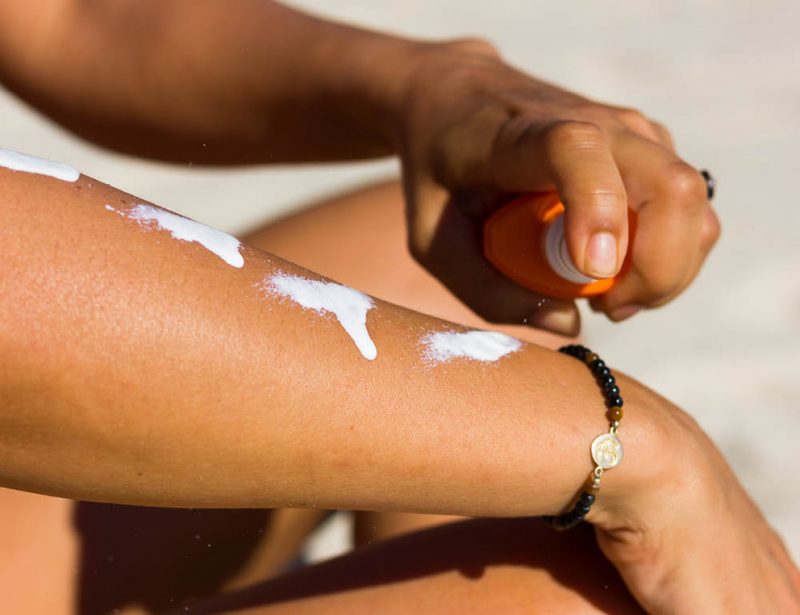Concerns about chemicals have led do-it-yourselfers (DIY) to make everything from laundry detergent and soap to deodorant and toothpaste at home using natural ingredients.
As summer begins, the DIY crowd is also whipping up batches of homemade sunscreen, using recipes that mix zinc oxide with coconut oil, shea butter, Vitamin E and other ingredients.
Dr. Colette Pameijer, a surgical oncologist and skin cancer specialist at Penn State Health, said a survey of the often-used recipes, coupled with scientific information about the trend, tells her that making your own sunscreen is an incredibly bad idea.
“I am a vegetarian and health nut, so I totally get it that people want to limit the chemicals in their life,” she said. “But the chemicals in sunscreen are good chemicals and they serve a very important purpose.”
Most home sunscreen recipes use essential oils and zinc oxide or titanium dioxide. While essential oils are untested, zinc and titanium are legitimate sun blockers, although different from sunscreens.
“Zinc and titanium are mechanical blocking agents, which means they work as long as they are on the skin and physically blocking the rays,” Pameijer said. “As soon as they are washed off or sweated off, you are left unprotected from the sun.”
Pameijer said the dangers of ultraviolet rays are “so much more obvious and immediate” than any potential risks from the ingredients in sunscreen.
Sunblock functions through a chemical reaction on the skin that creates a mechanical barrier. While some of those chemicals are absorbed by the skin, she is not aware of any data to support long-term damage.
“Just because a substance is absorbed doesn’t necessarily mean it’s bad,” she said. “I think the benefit of sunscreen is proven and the risks are speculative.”
To be effective, the active ingredients in sunscreen must be properly dispersed and stabilized throughout the mixture, and that’s hard to achieve without professional laboratory equipment. The formulation must then be tested for effectiveness and SPF value.
“Unless you are testing it yourself and letting yourself burn each time you make a new batch, you really can’t determine the SPF,” she said. “It doesn’t make any sense to do that.”
Pameijer recognizes that many people have sensitive skin and react to some brands of sunblock on the market because of the chemicals they contain.
“I am one of those people,” she said. “But there are a ton of different products available. You may have to shop around a bit before you find something you like.”
Some people react adversely to oxybenzone, a chemical in some newer formulations of sunblock that also protect against deeper-penetrating UVA rays that cause skin damage, wrinkling and cancer. UVB rays are the ones responsible for producing sunburn and are what most sunscreens protect against.
Another common sunscreen additive that can cause allergic reactions is para-aminobenzoic acid, or Paba.
Another option is to use sunscreen only on your face and hands and wear clothing that protects against ultraviolet rays.
“I think they work better than any sunblock on the market,” she said. They drastically reduce your amount of exposure.”
Pameijer said it’s especially important to protect children because heavy sun exposure early in life is a risk factor for skin cancer.
While those with darker natural pigmentation to their skin may be less likely to burn or develop melanoma, she still recommends they use sunscreen religiously.
“They can develop other cancers and premature aging,” she said. “Your skin will still get damaged.”
Some advice she gives her patients includes the following:
- Wear hats, sunglasses and ultraviolet clothing outdoors in the summer.
- Be aware that ultraviolet light exposure is higher on the water or beach – even under an umbrella – because of reflected as well as direct rays. Take extra precautions.
- Exercise and garden outdoors in the morning or evening. Avoid being outdoors between 10 a.m. and 4 p.m. when the sun’s rays are most direct.
- Use sunblock with at least an SPF of 30.
- Sunblock of SPF 55 and above offers diminishing returns.
- Check the expiration date and toss old bottles: “If you still have last year’s sunscreen, you didn’t use enough.”
- Apply sunscreen 10 minutes before exposure so it has time to work.
Related content:
- The Medical Minute: Surviving summer’s biting bugs
- The Medical Minute: Ways to promote healthy summer sleep routines for your family
- The Medical Minute: Reminders for a healthy summer
The Medical Minute is a weekly health news feature produced by Penn State Health. Articles feature the expertise of faculty, physicians and staff, and are designed to offer timely, relevant health information of interest to a broad audience.
